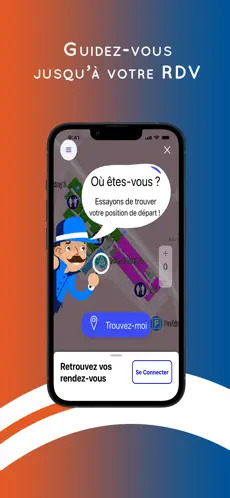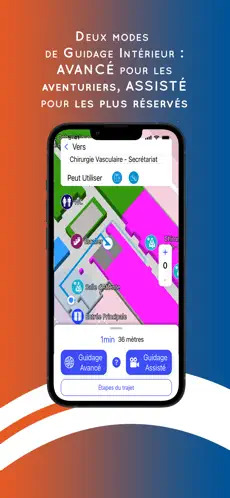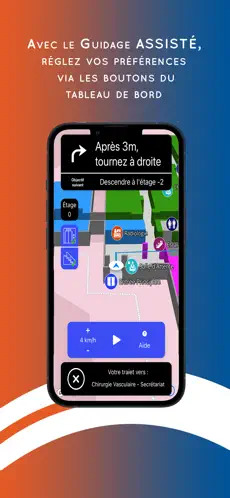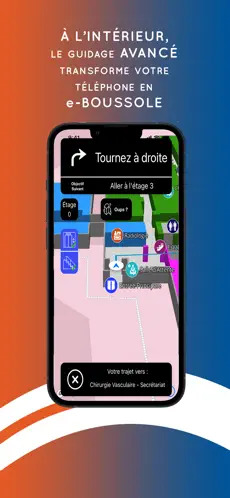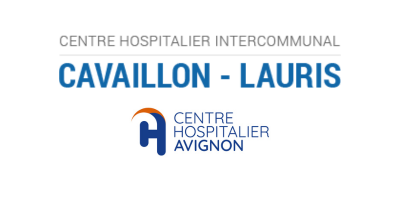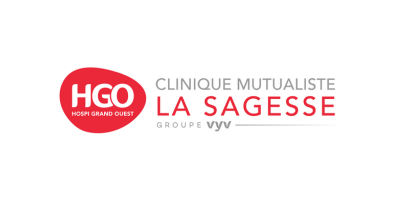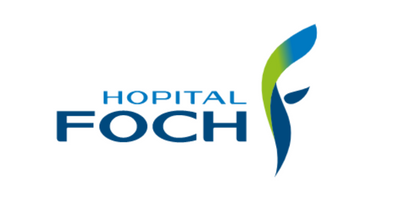
The request of the North-West Hospital of Villefranche-sur-Saône
The North-Western Hospital of Villefranche-sur-Saône, a support hospital of the Rhône Nord Beaujolais Dombes Hospital Group, has chosen to install our innovative system of reception and guidance of patients following the installation of their new buildings. The goal is to facilitate and optimize the patient’s journey in their premises.
The HNO Plan mobile application, the solution proposed by Sweepin
HNO Plan is a mobile application implemented with our patented real-time step-by-step guidance solution. This solution allows patients and visitors to be guided to their appointment location with instructions delivered from their smartphone.
Using the application, patients and companions can be guided from their home to the hospital via GPS.
Upon arrival at the hospital buildings, patients can scan a QR code to define their starting position and then select their destination from a list. They can also add the administrative step to their journey if it is necessary. Two guidance modes are available:
- Advanced mode guidance, with the e-Compass guiding the user step by step in real time,
- Assisted mode guidance, with the user’s own speed control, who then follows the instructions on the screen.
In addition to all this, patients can retrieve their appointments by logging into the application. Once retrieved, the appointments are integrated into the application’s calendar and updated in real time in case of changes. Users are notified when their appointment is approaching and can find all the information they need about it.
This solution does not require any mobile or wifi network, the guidance is done offline in the establishments that are equipped with it. It is the phone’s sensors that allow the application to find the user’s position and to follow him throughout the journey.
The benefits of this application for the hospital in Villefranche-sur-Saône
This indoor geolocation solution represents a considerable time saving for patients and visitors who thus optimize their time spent in the hospital buildings. It also optimizes queues, especially at the reception desk, and frees up time for hospital staff, who can concentrate on other tasks. Of course, medical and location data of patients are not stored.


